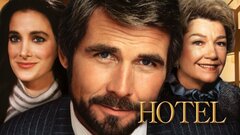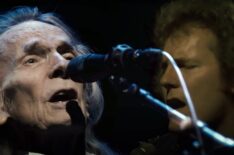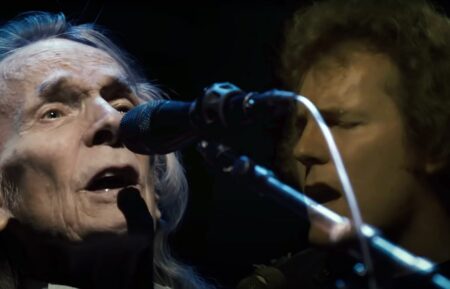Gordon Lightfoot

Singer • Songwriter • Musician
Birth Date: November 17, 1938
Death Date: May 1, 2023 — 84 years old
Birth Place: Orillia, Ontario, Canada
Beginning in the mid-1960s, singer-songwriter Gordon Lightfoot became one of Canada's most celebrated entertainers, as well as one of the most successful figures on its vast folk music scene. Blessed with a warm, distinctive baritone voice and a talent for lyrics that addressed both personal and global issues in memorably poetic terms, Lightfoot became a sensation in his native country before exploding on the U.S. charts with "If You Could Read My Mind" in 1970.
He would enjoy exceptional chart success throughout North America throughout the decade with hits like "Sundown," "Rainy Day People" and "The Wreck of the Edmund Fitzgerald" before his star began to fade in the United States. Lightfoot remained a national treasure in his native country, which he toured regularly into the new millennium despite several major health setbacks. He was also greatly revered by other artists, including Elvis Presley, Bob Dylan, Johnny Cash, Harry Belafonte and John Mellencamp, all of who recorded his material on their own albums. Still active and recording new material in his seventh decade, Gordon Lightfoot was among Canada's greatest musical treasures, as well as a beloved songwriter around the globe.
Born Nov. 17, 1938 in Orillia, a waterfront city in Ontario, Canada, Gordon Meredith Lightfoot, Jr. began performing at an early age with the encouragement of his mother, who recognized his latent talents. Singing in church and school at the age of five led to youth competitions and vocal lessons, which preceded his win at a Toronto Kiwanis Festival at the prestigious Massey Hall in 1951.
Lightfoot soon added drums, piano and guitar to his growing list of musical talents, and sang with a local folk group before heading to California in 1958. There, he studied jazz composition and orchestration at the Westlake College of Music while supporting himself by singing on demo recordings and writing commercial jingles. Lightfoot returned to Canada in 1960, where he became a member of the Swinging Eight, which gained weekly exposure on the television series "Country Hoedown" (CBC, 1956-1965).
After releasing a pair of singles in 1962, he teamed with Terry Whelan as the Two-Tones, which spawned an album and live performances at various folk festivals. Lightfoot quit the group in 1963 to head for England, where he hosted a BBC television series, "The Country and Western Show." While there, he also began penning introspective folk songs in the vein of Bob Dylan, which caught the attention of popular Canadian folk duo Ian & Sylvia. Their recording of his "Early Mornin' Rain" and "For Lovin' Me" led to follow-up renditions and covers of other songs by Peter, Paul and Mary, Marty Robbins, Judy Collins and the Kingston Trio.
Albert Grossman, who managed Dylan and Ian & Sylvia, soon signed Lightfoot to a management deal, which was soon followed by a recording contract with United Artists. His first solo album, titled Lightfoot! (1966), featured well-received versions of "Early Mornin' Rain" and "For Lovin' Me," which helped to mint him as a star on the rise in his native country. By 1969, he was one of Canada's most popular musical performers, thanks to a slew of Top 40 singles, including a 1965 version of Dylan's "Just Like Tom Thumb's Blues," which reached No. 3. He also proved a popular concert draw throughout North America and abroad, though chart success in America proved elusive until 1970, when the expiration of his contract with United Artists led to a new deal with the Reprise label.
His first record under their aegis, 1970's Sit Down Young Stranger, spawned the wistful single "If You Could Read My Mind," which rose to No. 5 on the Billboard pop singles chart while also earning a Grammy nomination for Best Vocal Performance, Male. The album was quickly retitled If You Could Read My Mind, which helped to send it into the Top 10. A string of moderately well-received albums charted at the lower end of the albums chart before Lightfoot was forced to curtail his career for a short period of time following a 1972 diagnosis of Bell's Palsy.
He returned to recording in 1974 with Sundown, which spawned a No. 1 hit with the quietly menacing title track, as well as a Top 10 single with "Carefree Highway." The album also found Lightfoot introducing more electric instruments into his largely acoustic arrangements, a trend which would continue with 1976's Summertime Dream, which featured his twice-Grammy-nominated, No. 2 single "The Wreck of the Edmund Fitzgerald," a haunting ballad based on a recent shipwreck in the Great Lakes that killed all aboard that he - and most fans and critics - would consider his best work.
During this period, Lightfoot also released Gord's Gold (1975), a collection of new versions of songs from his United Artists period. His final Top 40 hit came with 1978's "The Circle is Small (I Can See it in Your Eyes)," after which he concentrated largely on his Canadian fan base while contributing time to various charitable causes. Lightfoot also dabbled briefly with acting, appearing in the Canadian features "Harry Tracy" (1982) and "Desperado" (1982), before his induction into the Canadian Music Hall of Fame in 1986.
Lightfoot continued to record albums throughout the 1980s and early 1990s, scoring occasional Adult Contemporary hits in his native country. He returned to his folk-acoustic sound for 1993's Waiting for You and A Painter Passing Through (1998), both of which received some of his highest critical praise in years. The momentum generated by these releases was cut short in 2002 when Lightfoot suffered an abdominal aortic aneurysm that left him in a coma for six weeks. Four surgical operations were eventually required before his recovery in 2003, after which he was made a Companion of the Order of Canada, his country's highest order.
He soon returned to recording with 2004's Harmony and touring at the conclusion of the year. However, he experienced another health setback in 2006 after suffering a minor stroke onstage that immobilized two fingers on his right hand.
In typical fashion, Lightfoot was back on the road in less than 10 days after the incident, using a second guitarist to complete the more difficult passages in songs until he had fully regained the use of his hand in 2007. That same year, Lightfoot was one of four Canadian musicians, including Joni Mitchell and Anne Murray, to be honored with a postage stamp bearing their names and likenesses.
In 2010, word spread throughout the globe via Twitter that Lightfoot had died. News outlets soon picked up the item, including a Winnipeg radio station that received a call from a bemused Lightfoot, who had phoned them to refute the rumors. Two years later, he released All Live (2012), a collection of live recordings from his numerous appearances at Massey Hall. That same year, he was inducted into the Songwriters Hall of Fame. Gordon Lightfoot died on May 1, 2023 in Toronto, ON, Canada at the age of 84.
Credits

Gordon Lightfoot: Return Into Dust

Canada Files

Gordon Lightfoot: Oh so Sweet (Lyric Video)

Gordon Lightfoot Feat. Barry Keane (Drums), Mike Heffernan (Keyboards), Rick Haynes (Bass) & Terry Clements (Guitar):

Q With Jian Ghomeshi

George Stroumboulopoulos Tonight

Late Night With Jimmy Fallon

etalk

Gordon Lightfoot: Live in Reno

Mansbridge One on One

Hotel

Harry Tracy

CBS News Sunday Morning

Gordon Lightfoot: Wreck of the Edmund Fitzgerald

Saturday Night LiveStream

Gordon Lightfoot: Rainy Day People

In Concert




